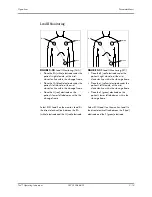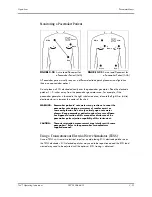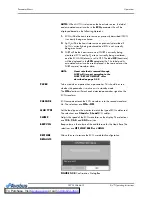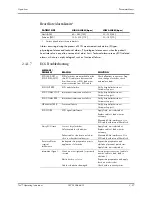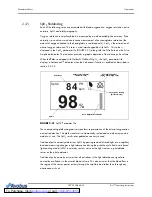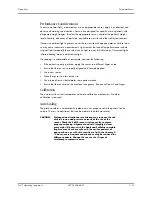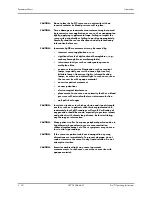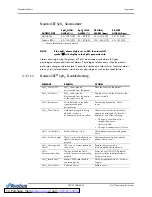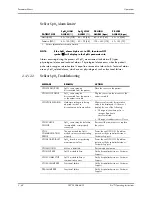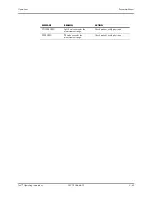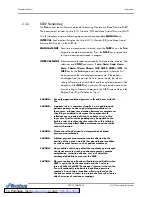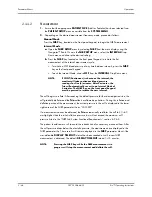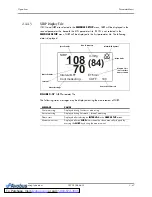
Parameter Menus
Operations
2 - 32
0070-10-0666-01
Trio™ Operating Instructions
2.4.3
SpO
2
Monitoring
Each of the following terms are associated with blood oxygenation: oxygen saturation, pulse
oximetry, SpO
2
and plethysmography.
Oxygen saturation in capillary blood is measured by a method called pulse oximetry. Pulse
oximetry is a continuous and non-invasive measurement of oxyhemoglobin saturation (the
amount of oxygen attached to the hemoglobin in red blood cells). SpO
2
is the estimation of
arterial oxygen saturation. This term is used interchangeably with SaO
2
. This value is
displayed in the SpO
2
parameter tile (FIGURE 2-31) along with the Pulse Rate and the Pulse
Amplitude Indicator. The indicator provides a graphic depiction of the relative pulse volume.
When the
Trio
is equipped with Nellcor® OxiMax® SpO
2
, the SpO
2
parameter tile
displays a SatSeconds™ Indicator when the SatSeconds function is enabled as described in
section 2.4.3.2.
FIGURE 2-31
SpO2 Parameter Tile
The corresponding plethysmogram is a waveform representation of the arterial oxygenation
and pulse detection. The pleth waveform is automatically scaled and no adjustment can be
made to its size. The SpO
2
results are updated once every second.
Traditional pulse oximetry determines SpO
2
by passing red and infrared light into a capillary
bed and measuring changes in light absorption during the pulsatile cycle. Red and infrared
light-emitting diodes (LEDs) in oximetry sensors serve as the light sources, a photodiode
serves as the photo detector.
Traditional pulse oximetry assumes that all pulsations in the light absorbance signal are
caused by oscillations in the arterial blood volume. This also assumes that the blood flow in
the region of the sensor passes entirely through the capillary bed rather than through any
arterio-venous shunts.
%
SpO2
98
84
PR
25
bpm
Pulse Rate
SpO
2
Pulse Amplitude Indicator
Alarm OFF Symbol
(SpO
2
alarm high only)
SatSeconds Indicator
(Nellcor® only)
SatSeconds Setting
(Nellcor® only)
To Purchase, Visit


